Brazilian Pastel Recipe With Beef Filling

This Brazilian Pastel recipe with savory ground beef (or chicken) filling is so easy to make at home for a fun snack, appetizer, or even main dish! Feed a few or a crowd!
Okay friends, get ready for the most delicious, flaky, crispy, savory, fried pastry! This is the traditional Brazilian Pastel Recipe! Pasteis (the plural of pastel in Portuguese) are light, thinly rolled pastry dough pockets filled with a variety of ingredients, but most notably with cheese (queijo) and/or beef. This version is the simple, but flavorful ground beef filling with just a few perfect seasonings.
The pastry is fried until it puffs and bubbles for the most beautiful flaky and crispy crust. The inside of the crust gets these amazing soft layers and then the filling is hot and delicious.
Easy to make - Check out this video!
Every culture has a version of savory fried pastries. These are similar to a deep fried empanada, but a pastel has a is thinner dough. This Brazilian Pastel recipe is by far my favorite. A number of sources indicate that the pastel came to Brazil along with Japanese immigrants. They adapted the Chinese wontons to sell as snacks at the weekly street markets to earn a living in their new country. I first had Pasteis in a restaurant, but then enjoyed them at an Avenida Paulista street fair, as they make a delicious and easy-to-eat street food! I love either the cheese alone or the ground beef alone, so that I can really taste the ingredients. Whatever you put in these babies, you just cannot go wrong!
Brazilian Pastel Recipe Ingredients and Swaps
Pastel Dough Ingredients
- All Purpose Flour - Traditional recipes use simply regular all purpose flour. You could substitute in whole wheat flour, but be careful as it may absorb more of the liquid, so start with 1 ¾ cups and then if the dough is too sticky, slowly add the last ¼ cup until perfectly elastic. For Gluten free dough, you can substitute in a 1:1 all purpose gluten free flour. NOTE: I have not tried any other flour but all purpose white flour, so please send me a comment if you try another!
- Egg, yolk only - This may seem strange to only add the yoke, but it's what my Brazilian Cookery cookbook, published in 1965, told me to do and it worked. If you add the entire egg, you will want to reduce the amount of water to ¼ cup (adding a teaspoon more at a time if needed).
- Butter - I used salted butter, but you can use unsalted. You can also use margarine.
- Water, room temperature - See the note above regarding using a whole egg.
- Salt - This is a savory pastry, so that's why the salt. You can reduce it if preferred or if turning this into a sweet version with a sweet filling.
Filling Ingredients
- Ground Beef - I used 90% Lean ground beef. You can use any ground beef of your preference. You can also use ground chicken, shredded chicken, ground turkey, or ground pork.
- Olive Oil - I used Extra Virgin Olive Oil to cook the ground beef. You can also use vegetable oil, canola oil, coconut oil, or avocado oil.
- Garlic cloves - Fresh is best when it comes to garlic. You can buy pre-minced garlic to save time or mince it in bulk and freeze it for use when you need it! You can also substitute in dried garlic flakes or garlic powder.
- Scallions (green onions) – I love scallions for the green color and mild onion-flavor. You can swap with finely chopped onions, yellow or red, or even shallots.
- Chili Powder - Chili Powder brings a peppery note without the heat. You can also use red pepper flakes for heat or smoked paprika.
- Ground Cumin – Cumin gives that distinct smoky flavor that hard to replace. However, if you don’t have cumin, you could add in smoked paprika instead.
- Salt - I use kosher salt for savory cooking, but any course salt or table salt will be fine.
- Black Pepper - I used coarsely ground, but any ground black pepper is fine.
- Oil for Frying - As with any deep frying, you will want a neutral oil with a high cooking temperature. I used soybean oil, but canola oil, peanut oil, vegetable oil all work for this.
Simple Equipment and Tools
My tip for rolling out this dough, is to use a pasta roller. The dough is similar to pasta dough and if you've ever tried to toll pasta out by hand, then you know how hard it can be. The dough for this recipe needs to be thin, so a pasta roller makes the job incredibly easy and the thickness consistent. I used this Pasta Maker with roller, but you can also use a blender attachment.
I used a small pot to make these pasteis one at a time because I was limited on oil. However, I recommend a larger, wide bottom, deep pot, such as a dutch oven for frying the pasteis.
You can also use a deep skillet or frying pan for frying, but it can splatter and be a bit messier. This 12″ Ceramic Pan is good for this.
When the pastel comes out of the oil, you will want to dry it on paper towels or a wire rack over baking sheet.
Brazilian Pastel Recipe Tips
You can make the dough up to 2 days in advance and store it in plastic wrap in the fridge.
My biggest tip for this recipe is to use a pasta roller for rolling out this dough. The dough is similar to pasta dough and if you've ever tried to toll pasta out by hand, then you know how hard it can be. The dough for this recipe needs to be thin, so a pasta roller makes the job incredibly easy and the thickness consistent. I used this Pasta Maker with roller, but you can also use a blender attachment.
If you don't have a pasta roller, then you can roll it out by hand using a rolling pin. If the dough has been in the refrigerator, then bring it out to room temperature. Cut the dough into 4 equal parts and let it rest for 20-40 minutes to make it easier to roll. Flour your clean surface and then press the dough flat with your hand. Flour both sides of the dough and begin to roll the dough out from the center away from you.
How to Make this Brazilian Pastel Recipe
Make the Dough
The dough is only a few ingredients and very easy. You can make the dough in advance and keep it in plastic wrap for up to 2 days.
Add the salt to the water and set aside.
Sift the flour into a large bowl or flat surface. Make a well in the center and add the egg yolk and softened butter. Tip: I like to cut the butter into small pieces and then let it come to room temperature to soften.
Using a fork, combine the flour with the egg yolk and butter.
Add the salted water and continue to mix until it starts to pull away from the sides and stick together. Then switch from fork to hands and knead (in the bowl or lightly floured work surface) until the pastry is elastic, about 4-5 minutes.
Let the dough rest for 1 hour, covered with a cloth or plastic wrap. If longer than an hour, wrap in plastic wrap and store in the refrigerator for up to 2 days.
Make the filling
Mince the garlic. Thinly slice the scallions.
Preheat a medium-large pan on high heat. Turn the heat to medium heat and add 1 teaspoon Olive Oil, then the ground beef. Break up the beef and add the minced cloves garlic, sliced scallions, chili powder, cumin, salt, black pepper. Transfer the filling to a bowl and let it cool in the fridge.
NOTE: You can substitute ground chicken without any change to the recipe. See FAQs for using shredded chicken.
Roll and Cut the Pastel Dough
Roll the dough out using a pasta machine or roller attachment (see recipe notes for rolling by hand). Cut the dough into 4 equal parts and let it rest at room temperature for 20-40 minutes to make it easier to roll.
Start with one section of the dough and flatten it with your hands to about ¼ to ½ inch thick. Flour both sides of the dough before inserting it into the pasta roller. Start with the thickest setting, slowly working your way to the thinnest setting.
You should end up with a long and very thin wide strip that you will use to cut into the pastel rectangles. If the sheet breaks, simply patch it back up together.
Cut into large squares that are between 5-6 inches x 5-6 inches. I can usually get 4-5 squares per sheet (4 sheets = total of 16-20 pasteis). You can also cut large circles and then fold into a half circle, but the rectangle is a popular shape in Brazil and I love how easy it is!
TIP: I do this cutting by folding over the dough into the final rectangle shape. This helps me make sure that the shape is even and makes space on the surface to cut all of the sheet. I can then also easily see where to trip the ends of the dough.
Assemble and Fry this Brazilian Pastel Recipe
Add a heaping tablespoon or so of the cooled beef filling to the pastel dough, just to the left of the center of each square so that you can fold over the right side, making pastel rectangles.
Using your fingers, moisten the edges of left edges of dough with water. Carefully fold over the right side keeping the filling inside away from the edge so that you get dough on dough to seal. Push down to seal with fingers.
Then use fork tines to press and seal the edge of the dough all around the outside. Place on a sheet pan or floured surface until ready to fry. Now, either fry them (see below) or place the sheet pan in the freezer and then transfer the pasteis to a storage container after frozen.
Heat a large, deep pot of vegetable oil to 360 F to 375 F degrees.
You can test the oil with a small piece of dough or by inserting a wooden spoon handle and see if it bubbles. If it does, the oil should be ready.
Add 1-2 pastels at a time, lowering each carefully into the hot oil and frying for about 15 to 20 seconds until golden brown. Then place the Pastel on paper towel to absorb the excess oil.
What to Serve with Brazilian Pasteis
If you're making these Pasteis for a party and want another great snack food option, then how about including Coxinha Chicken Croquettes?
Need to complete the meal, then I recommend serving them with Feijão: Brazilian Beans Recipe.
When the Pasteis are an appetizer, then a delicious main course is Coconut Shrimp Stew ~ Moqueca de Camarão!
Recipe FAQs
Doesn't Brazilian Pastel dough have vinegar or alcohol?Some Brazilian pastel dough recipes do have vinegar or alcohol included. The idea is that it makes the dough crispier when it fries. However, there are many traditional versions without any vinegar or alcohol. As you can see from the pics and my family and I can attest to, these were SUPER CRISPY without it!
Can I make the filling with chicken?You can put just about any filling you want inside this Brazilian Pastel recipe. For chicken, you use either ground or shredded. For ground chicken, simply swap in the chicken in place of the beef in this recipe. For shredded, you can shred the cooked chicken and then mix it with the seasonings in the pan as you would the the ground chicken. For the shredded chicken, you can also add in shredded cheese or ¼ cup cream cheese just to help bind the filling a bit.
Can I fill these Pasteis with Cheese instead?Pastel de Queijo, or Pastel with cheese, is another popular version. You can use any semi-soft cheese or melting cheese, such as mozzarella, jack cheese, cheddar cheese, fontina, or similar.
How can I make these vegetarian?A vegetarian version instead of a meat filling for this Brazilian Pastel recipe would be delicious! Rather than the ground beef, you can use veggies or a plant-based meat alternative. For veggies, I love a sauteed combination of 2 cups raw chopped mushrooms, 1 diced bell pepper, and 1 cup diced zucchini along with the onions, garlic, and seasonings. It will seem like a lot of veggies, but they will cook down. You can also add in chopped olives and hearts of palm. Follow the rest of the recipe instructions for filling the pasteis.
Brazilian Pastel Recipe With Beef Filling
Recipe details
Ingredients
Pastel Dough
- 2 cups All Purpose Flour
- 1 Egg, yolk only
- 2 Tablespoons Butter, softened (I used salted, but unsalted is fine too)
- 1/3 cup Water, room temperature
- 1 teaspoon Salt
Filling & Frying
- 1 lb Ground Beef (I used 90% Lean)
- 1 teaspoon Olive Oil
- 2 Cloves Garlic, minced (or 2 teaspoon garlic powder)
- 2 Scallions, sliced thin
- 2 tablespoons Fresh Cilantro, chopped
- 1 tablespoon Chili Powder
- 1 tablespoon Cumin Powder
- 1/2 teaspoon Salt (or to taste)
- 1 teaspoon Ground black pepper
- Water to help seal the pastel edges
- Oil for frying (I used Soybean Oil)
Instructions
Make Dough
- Add the salt to the water and set aside.
- Sift the flour into a large bowl or flat surface. Make a well in the center and add the egg yolk and softened butter. Using a fork, combine the flour with the egg yolk and butter.
- Add the salted water and continue to mix until it starts to pull away from the sides and stick together. Then switch from fork to hands and knead (in the bowl or lightly floured surface) until the pastry is elastic, about 4-5 minutes. Let stand for 1 hour, covered with a cloth or plastic wrap. If longer than an hour, wrap in plastic wrap and store in the refrigerator for up to 2 days.
Make Filling
- Mince the garlic. Thinly slice the scallions. Chop the cilantro.
- Make the ground beef filling by first preheating a medium-large pan on high heat. Add 1 teaspoon Olive Oil, then the ground beef. Break up the beef and add the minced cloves garlic, sliced scallions, cilantro, chili powder, cumin, salt, and black pepper. Transfer the filling to a bowl and let it cool in the fridge.
Make Pastels
- Roll the dough out using a pasta roller machine or attachment (see notes for rolling by hand): If the dough has been in the refrigerator, then bring it out to room temperature. Cut the dough into 4 equal parts and let it rest for 20-40 minutes to make it easier to roll.
- Start with one section of the dough and flatten it with your hands to about ¼ to ½ inch thick so that you can fit it into the pasta roller. Flour both sides of the dough before inserting it into the pasta roller. Start with the thickest setting, slowly working your way to the thinnest setting. You should end up with a long and very thin wide strip that you will use to cut into the pastel rectangles. If the sheet breaks, simply patch it back up together.
- Cut into large squares that are between 5-6 inches x 5-6 inches. This should be about the width of the sheet of dough, so that you are simply cutting 5-6 inch sections along the length of the sheet. I can usually get 4-5 squares per sheet (4 sheets = total of 16-20 pasteis).
- Take the cooled beef filling and add a heaping tablespoon or so to the pastel dough, just to the left of the center of each square so that you can fold over the right side, making pastel rectangles.
- Using your fingers, moisten the edges of three left edges of dough with water. Carefully fold over the right side keeping the filling inside away from the edge so that you get dough on dough to seal. Push down to seal with fingers. Then use fork tines dipped into the cold water to crimp around the edge.
- Place on a sheet pan or floured surface until ready to fry. Now, either fry them (see below) or place the sheet pan in the freezer and then transfer the pasteis to a storage container after frozen.
- Heat a large, deep pot of vegetable oil to 360 F to 375 F degrees. Add 1-2 pastels at a time, lowering each carefully into the hot oil and frying for about 15 to 20 seconds until golden brown. Then place the Pastel on paper towel to absorb the excess oil.
Tips
- Rolling the Pastel Dough by Hand: If you don't have a pasta roller, then you can roll it out by hand using a rolling pin. If the dough has been in the refrigerator, then bring it out to room temperature. Cut the dough into 4 equal parts and let it rest for 20-40 minutes to make it easier to roll. Flour your clean surface and then press the dough flat with your hand. Flour both sides of the dough and begin to roll the dough out from the center away from you. Continue to roll each of the 4 sections of dough until the dough is very thin (about thickness of a dime). If the dough breaks or rips, simply patch it back together again. One the dough is rolled out, you can cut it into squares that are 5-6 inches by 5-6 inches. Follow the rest of the instructions in the recipe.
- If you don't have a pasta roller, then you can roll it out by hand using a rolling pin. If the dough has been in the refrigerator, then bring it out to room temperature. Cut the dough into 4 equal parts and let it rest for 20-40 minutes to make it easier to roll.
- Flour your clean surface and then press the dough flat with your hand. Flour both sides of the dough and begin to roll the dough out from the center away from you.
- Continue to roll each of the 4 sections of dough until the dough is very thin (about thickness of a dime). If the dough breaks or rips, simply patch it back together again.
- One the dough is rolled out, you can cut it into squares that are 5-6 inches by 5-6 inches. Follow the rest of the instructions in the recipe.
- Alternative Fillings: Chicken: For chicken, you use either ground or shredded. For ground chicken, simply swap in the chicken in place of the beef in this recipe. For shredded, you can shred the cooked chicken and then mix it with the seasonings in the pan as you would the the ground chicken. For the shredded chicken, you can also add in shredded cheese or ¼ cup cream cheese just to help bind the filling a bit. Vegetarian: Rather than the ground beef, you can use veggies or a plant-based meat alternative. For veggies, I love a sauteed combination of 2 cups raw chopped mushrooms, 1 diced bell pepper, and 1 cup diced zucchini along with the onions, garlic, and seasonings. It will seem like a lot of veggies, but they will cook down. Follow the rest of the recipe instructions for filling the pasteis.
- Chicken: For chicken, you use either ground or shredded. For ground chicken, simply swap in the chicken in place of the beef in this recipe. For shredded, you can shred the cooked chicken and then mix it with the seasonings in the pan as you would the the ground chicken. For the shredded chicken, you can also add in shredded cheese or ¼ cup cream cheese just to help bind the filling a bit. Vegetarian: Rather than the ground beef, you can use veggies or a plant-based meat alternative. For veggies, I love a sauteed combination of 2 cups raw chopped mushrooms, 1 diced bell pepper, and 1 cup diced zucchini along with the onions, garlic, and seasonings. It will seem like a lot of veggies, but they will cook down. Follow the rest of the recipe instructions for filling the pasteis.




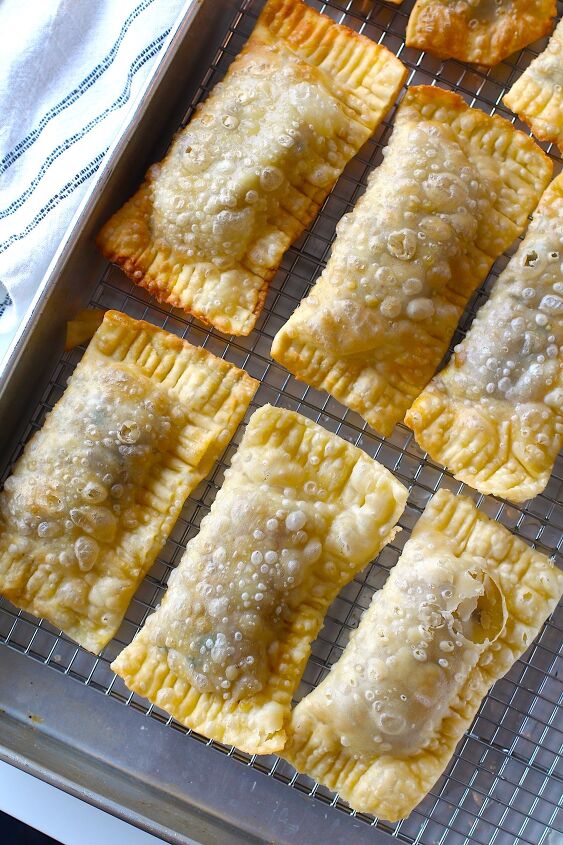












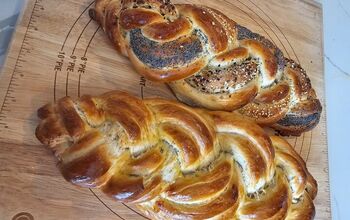
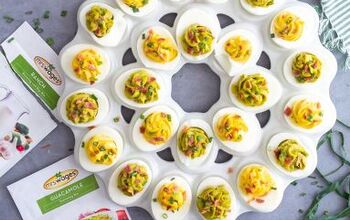
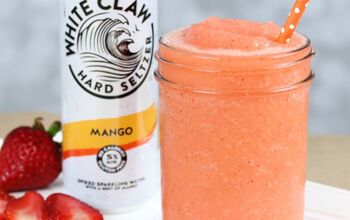
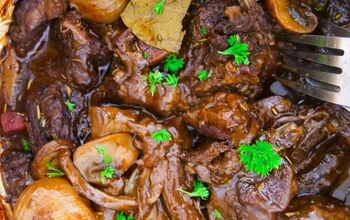

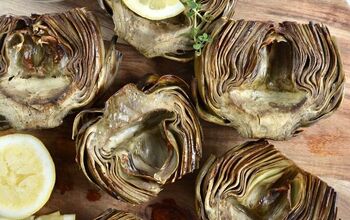
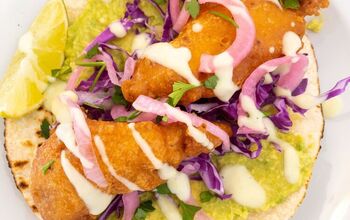
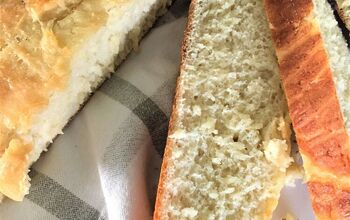

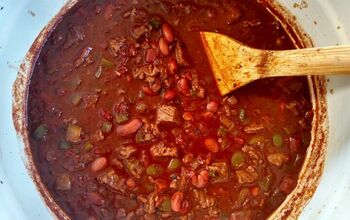

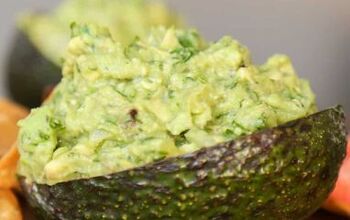
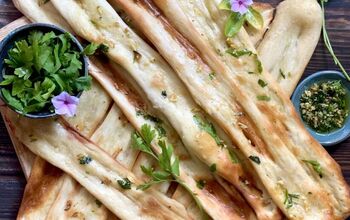

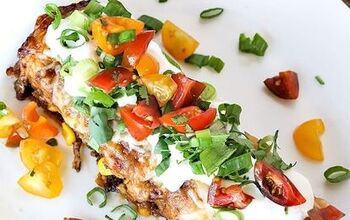


Comments
Share your thoughts, or ask a question!